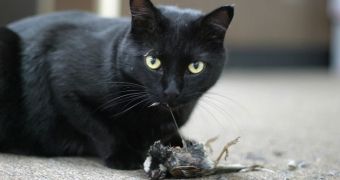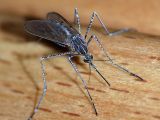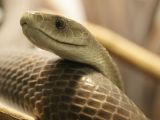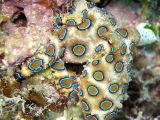As life on Earth evolved, Mother Nature really went out of her way to make some species stand out from the crowd. Undoubtedly, each animal has something unique about it, a certain color, skill or other ability that it can put to good use to either survive, defend itself, or hunt other creatures. And while humans remain the top predators, due to out technological means, here are some of nature's favorite killers that put us all to shame.
Humpback whales made it in the top due to the sheer size of the catch they need each day in order to stay alive. An adult can eat several tons of fish each day, and they often hunt in packs. A special technique that they employ is called a “bubble net.” In this approach, the leading whale sinks and begins to blow bubbles upwards through the water, while moving in a circular pattern. Fish caught within will try to escape by reaching towards the surface. When this happens, as much as 15 whales would swim upwards from below, and breach the surface, gulping off hundreds of kilograms of very unlucky fish at the same time.
The Black Mamba is generally regarded as being one of the most dangerous animals out there. Its bite is sufficiently powerful to kill an elephant, and it has no problems with attacking humans. As if this wasn't enough, the animal is also extremely aggressive, which means that it will actively seek targets to kill. It can also climb trees, which makes it even more dangerous as unsuspecting animals and humans pass under the canopy. In addition to being up to 4.3 meters long, it can also travel at speeds in excess of 16 to 20 kilometers per hour while on the ground, sufficiently fast to catch up with slower prey.
When it comes to devious and cruel ways to kill, the Blue-ringed Octopus is undoubtedly the king. This is especially true when it attacks humans that had the poor inspiration to hang around after seeing the creature. Despite its modest size, this type of octopus contains one of the most venomous cocktails of chemicals in the entire world, and its arsenal of substances includes tetrodotoxin. This blocks the sodium channels in the victim, essentially paralyzing it. The catch is that a human injected with the venom remains fully conscious, in spite of not being able to breathe, move, or have a heartbeat.
Moving a little further through the top, we meet the Box Jellyfish, the common name for Chironex fleckeri. This particular creature has earned an infamous reputation for itself due to the large number of human victims it has attacked. Found predominately in waters near Australia, the jellyfish contains a neurotoxic venom that is widely regarded as the strongest of any jellyfish. The “fun” part about this venom is that a single animal can carry enough to kill up to 60 adult humans, or about 70 children. The three-meter-long monstrosity can kill a fully grown man within as little as three minutes of unbelievably excruciating pain.
The runner-up in our classification is the Mosquito. This common house pest is relatively harmless in the developed world, but in the Third World it kills considerable numbers of people each year. In spite of its size, and of the fact that the bite itself only produces mild discomfort, the insect is home to a stunningly diverse population of germs and pathogens, including the ones causing malaria. Efforts to eliminate this agent are ongoing, but there is currently no way of reducing its impact on the human population. Its sheer number of victims constantly qualifies the mosquito for this top.
But nature's most agile, diverse and versatile predator is the House Cat. It has one of the most diverse diets in the animal kingdom, and is especially apt at hunting the widest array of creatures in its family of species. Its hunting performances exceed those of lions, tigers, leopards and Big Cats, and it is equally effective both during the night and in daytime. It feasts on fish, land animals and birds alike, and a well-trained adult can effortlessly secure meals for its offspring. Researchers are constantly amazed by the efficiency of the hunt, and by the fact that the animal's hunting strategy features elements that are present in many other species of felines.

 14 DAY TRIAL //
14 DAY TRIAL // 


